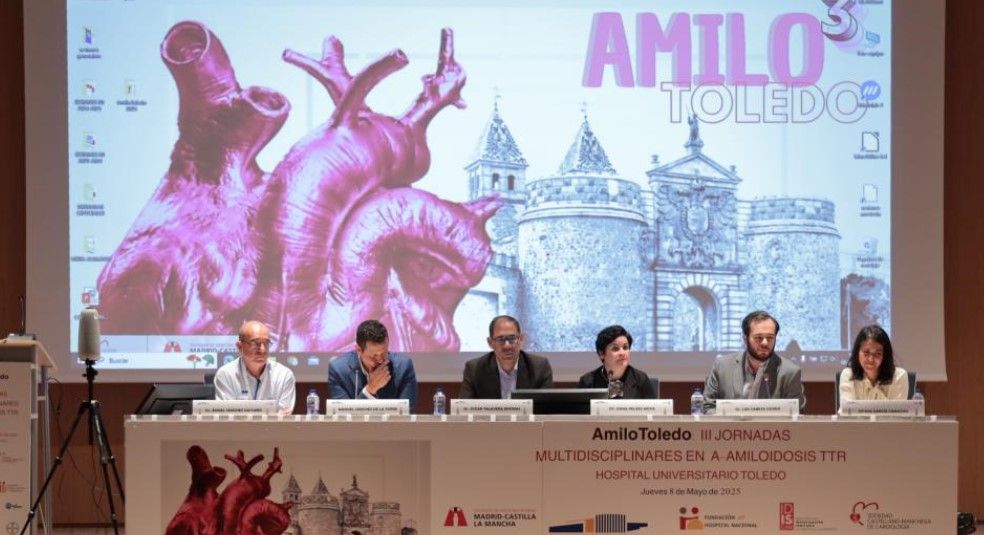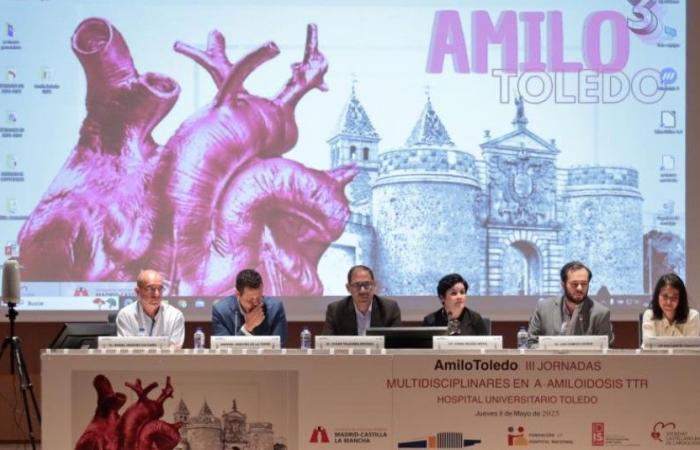The Toledo University Hospital Complex hosts the third multidisciplinary day in ATR amyloidosis, organized by internal medicine and cardiology services.

The day, which is attended by about a hundred professionals in cardiology, internal medicine, geriatrics, family and community medicine, pathological anatomy, physical medicine and rehabilitation, neurology, hospital pharmacy, ophthalmology, clinical and biochemistry analysis, nuclear medicine and medical medicine of Castilla-La Mancha, is organized in an introduction and four blocks.
In the introduction, the doctors of the Internal Medicine Service of the University Hospital of Toledo, Ángel Sánchez Castaño and Irene Carmona, will talk about the pathophysiology of the disease and about the clinical manifestations, while Dr. Rocío Eiros, of the University Hospital of Salamanca, will address the importance of a multidisciplinary unit.

The diagnostic block at the neurological level will be in charge of Dr. Lucía Galán, of the San Carlos Clinical Hospital of Madrid, Dr. Fabián Islas, of the Hospital Nuestra Señora del Prado de Talavera de la Reina will talk about the cardiological level, and Dr. Ana García, of the University Hospital of Toledo, will treat the role of the gammography.
Experts from all over the country
Subsequently, the both cardiological and neurological progression block will take place by Dr. Jesús Piqueras, the University Hospital of Ciudad Real, and Lucía Galán, of the San Carlos Clinical Hospital of Madrid. For his part, the doctor of the Juan Ramón Jiménez de Huelva Hospital, Álvaro Graga, will talk about the role of SNFL.

Already in the afternoon, the treatment block will be developed in which the doctors Pilar Redondo Galán and Eva García Camacho, internist and cardiologist of the Toledo University Hospital Complex respectively, will take a walk through the history and the treatment strategy of the A-ATTR.
-The meeting will end with the presentation of clinical cases to Cago from resident doctors of the health center.
Amyloidosis
Amiloidosis is a rare disease that occurs when an amyloid protein accumulates in the organs and causes them not to work correctly with an approximate incidence of three to five patients per million per year.
More than 30 proteins involved in the appearance of the different variants of this pathology have been described, but the most frequent are amyloidosis to (by light chains of immunoglobulins), ATT (by instability of transport due to mutations or associated with age) and AA (associated with chronic inflammatory disorders).
Transtirretin amyloidosis (A-ATTR) is an increasingly prevalent entity and is increasingly diagnosed in multiple scenarios. The most recent works based have shown a prevalence of up to 13 percent of patients over 60 years hospitalized for heart failure with preserved ejection fraction and left ventricular hypertrophy, and in up to 4 percent of men and one percent of women over 75 years in non -selected sets of gammaographies performed for other reasons.
Nuclear gammography
However, it continues to be an infradiagnosed disease where the identification of the signs, symptoms that make us suspect that we could find ourselves before a case and that precede in years the appearance of heart affectation the diagnostic advances by image, particularly nuclear scammography, which allows a definitive diagnosis of A-ATTR without biopsy, have simplified the diagnostic approach.
The availability of effective disease -modifying therapies contributes to the growing number of diagnosed patients. These therapies include stabilizers and transtirretin silencers that prevent amyloid deposits in the affected organs, thus stabilizing the phenotype or slowing down its progression.










